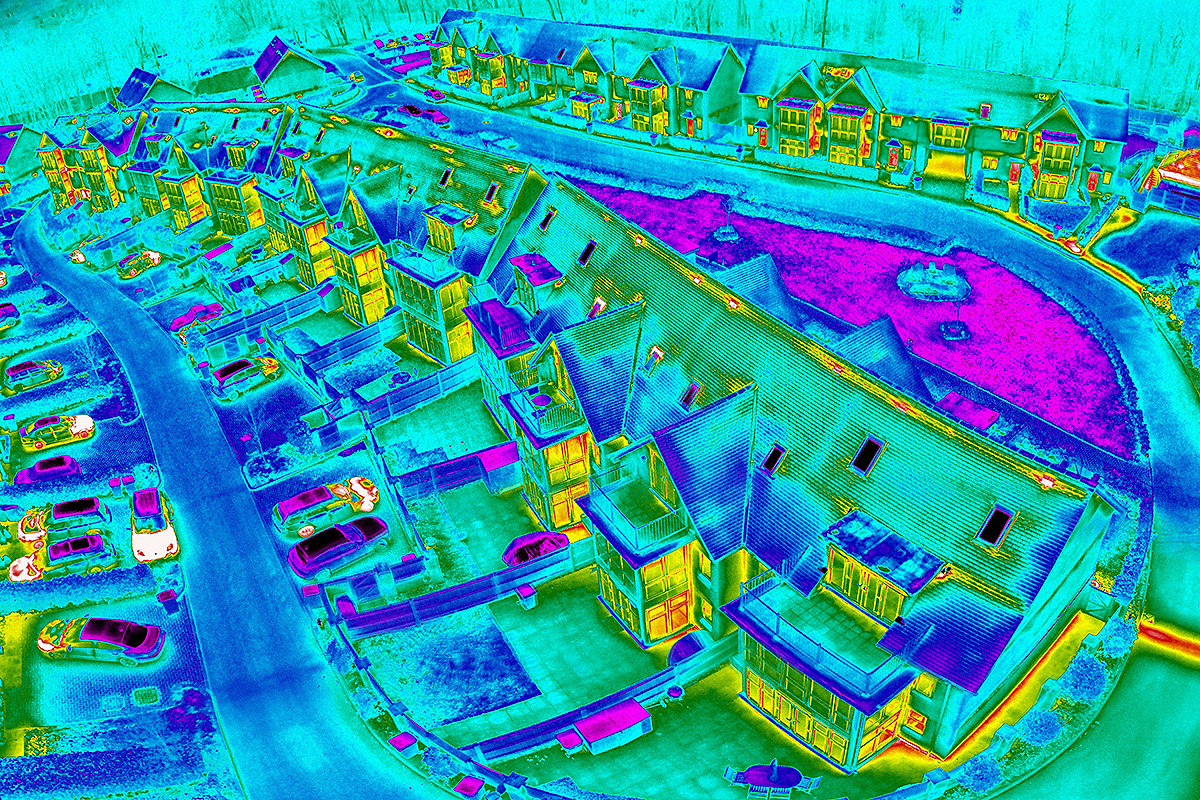Achieving sustainable futures with thermal imaging
In 2021, the UK Government was the first major economy to pass a net zero emissions law, with a commitment to reduce all greenhouse gas emissions to net zero by 2050. A major part of this is to be achieved through improvements in energy consumption within the built environment.
The energy used to heat the spaces we live and work in is one of the highest contributors to our individual carbon footprints. Globally, heat accounts for nearly half of all energy consumption and 40% of energy-related carbon dioxide emissions.
The carbon footprint of heating, however, is only one half of the story. In order to create a sustainable future, our homes and buildings need to be heated efficiently. This means trapping in the heat we generate instead of allowing it to leak out.
Whilst considerable efforts have been made towards constructing thermally efficient buildings (along with retrofitting older building stock), there is still no mechanism to provide verifiable evidence as to the actual performance of a building. Far too often there are discrepancies between what’s been designed and what’s been built, in turn creating large performance gaps through all stages of the building life cycle.
Thermal imaging is a technique that uses heat-sensitive cameras to detect subtle differences in temperature and is a non-destructive method for assessing heat loss in residential and commercial buildings. As an inspection tool, thermal imaging is able to accurately pinpoint areas for improvement as well as being able to monitor the effectiveness of any remedial works.
Despite numerous initiatives attempting to reduce energy consumption, energy use in buildings has grown continuously over the past 20 years. In order to achieve a net zero economy, it’s now paramount that innovative technologies such as thermal imaging are employed on a global scale to ensure decarbonisation by 2050.
Achieving a sustainable future means developing and retrofitting buildings to meet the needs of today, without compromising the needs of the future. With the global thermal imaging market expected to reach £11.3 billion by 2026 (Global Market Insights, 2019), iRed® is proud to be at the forefront of industry, pioneering new techniques for innovative technologies in an effort to revolutionise the inspection industry and move the global economy to net zero emissions.
[edit] Related articles on Designing Buildings
Featured articles and news
RTPI leader to become new CIOB Chief Executive Officer
Dr Victoria Hills MRTPI, FICE to take over after Caroline Gumble’s departure.
Social and affordable housing, a long term plan for delivery
The “Delivering a Decade of Renewal for Social and Affordable Housing” strategy sets out future path.
A change to adoptive architecture
Effects of global weather warming on architectural detailing, material choice and human interaction.
The proposed publicly owned and backed subsidiary of Homes England, to facilitate new homes.
How big is the problem and what can we do to mitigate the effects?
Overheating guidance and tools for building designers
A number of cool guides to help with the heat.
The UK's Modern Industrial Strategy: A 10 year plan
Previous consultation criticism, current key elements and general support with some persisting reservations.
Building Safety Regulator reforms
New roles, new staff and a new fast track service pave the way for a single construction regulator.
Architectural Technologist CPDs and Communications
CIAT CPD… and how you can do it!
Cooling centres and cool spaces
Managing extreme heat in cities by directing the public to places for heat stress relief and water sources.
Winter gardens: A brief history and warm variations
Extending the season with glass in different forms and terms.
Restoring Great Yarmouth's Winter Gardens
Transforming one of the least sustainable constructions imaginable.
Construction Skills Mission Board launch sector drive
Newly formed government and industry collaboration set strategy for recruiting an additional 100,000 construction workers a year.
New Architects Code comes into effect in September 2025
ARB Architects Code of Conduct and Practice available with ongoing consultation regarding guidance.
Welsh Skills Body (Medr) launches ambitious plan
The new skills body brings together funding and regulation of tertiary education and research for the devolved nation.
Paul Gandy FCIOB announced as next CIOB President
Former Tilbury Douglas CEO takes helm.
UK Infrastructure: A 10 Year Strategy. In brief with reactions
With the National Infrastructure and Service Transformation Authority (NISTA).























